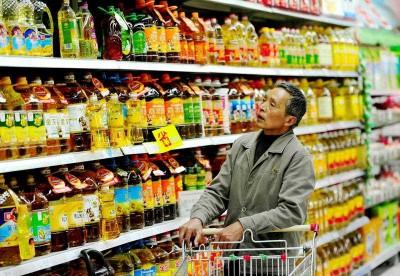
James Laurenceson, Deputy Director, Australia-China Relations Institute, University of Technology Sydney |
This article appeared in East Asia Forum, November 11 2014.
The global economy breathed a sigh of relief last month with the release of China’s third quarter growth numbers. The result of 7.3 per cent was down from 7.5 per cent in the previous quarter but came in a touch above consensus forecasts. The result was sufficiently robust for worries about a hard landing to retreat significantly.
Global growth has come to depend upon China more than ever. According to data from the IMF, while China accounted for only 12.7 per cent of world output in 2013, it accounted for a massive 29.6 per cent of growth. This was double the contribution of the United States, and China is forecast to repeat this again in 2014.
Even more important than the headline number was that consumption continued to overshadow investment as a driver of Chinese growth. This is consistent with the long-awaited rebalancing upon which China’s economic prospects depend.
Growth wedded to extremely high rates of investment is a sure path to diminishing returns and sluggish productivity gains. This is precisely the problem that Nobel Prize winning economist Paul Krugman found confronted Khrushchev’s Soviet Union in the 1950s and Asian countries such as Singapore more recently.
In 2013 investment hit 47.8 per cent of GDP, a level around which it has been stuck for the past five years.
It was in the third quarter of 2013 that hopes for consumption-led growth appeared once again dashed. But the figures released last month paint a different story. Through the first three quarters of 2014, consumption’s share of GDP growth was 48.5 per cent, up from 45.9 per cent at the same time last year. The share of investment was 41.5 per cent, down from 55.8 per cent.
These figures give some credibility to recent statements by China’s leaders that the focus for policy is now on bringing about the structural changes needed for sustainable growth in the long run, not on packages designed to give aggregate demand a temporary sugar hit.
But the latest numbers fall short of landing a knockout blow for China’s traditional investment-led growth model.
The big driver of growth in the third quarter was a jump in net exports. At the end of the second quarter, the contribution of net exports to year-to-growth was negative. But this rebounded to 0.7 percentage points at the end of the third quarter. The improvement in net exports meant that the contribution of consumption to year-to-date growth actually fell from 4 percentage points at the end of the second quarter to 3.6 percentage points at the end of the third. That of investment fell from 3.6 to 3.1 percentage points.
If net exports had not recovered, the ability of the Chinese authorities to resist the urge to inject stimulus would have been uncertain.
Ongoing rebalancing requires that the household sector has more income and they need to save less. But the latest Westpac MNI China Consumer Sentiment surveyshows that the state of current and expected family finances is below trend and falling. Meanwhile, the household savings rate is no lower than its trend value. Both will need to change if sustainable consumption-led growth is to take hold.
The costs to China of failing to rebalance remain as real as ever. In their latest country report, released in July, the IMF forecast that if needed reforms were swiftly implemented, China would grow at around 6.5 per cent in 2020 and 5.5 per cent in 2025. But without these reforms, future growth could fall to as low as 4 per cent and 3 percent, respectively. The Conference Board came out last month with similar forecasts.
Low growth in China is a future that the global economy should fear. It would hold back the rise of China’s middle class — predicted to grow by as many as another 850 million by 2030, according to the Brookings Institution — which is set to underpin demand for traded goods and services for decades to come.
Author
Professor James Laurenceson is Deputy Director of the Australia-China Relations Institute at the University of Technology Sydney.


